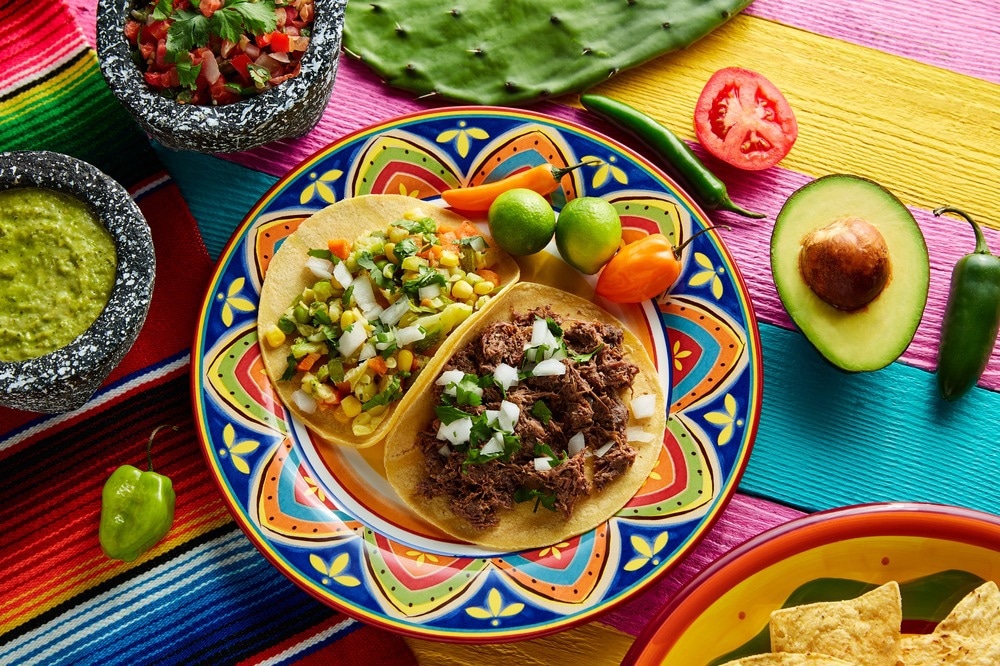In a recent study published in the Foods journal, researchers assess the phenolic content (PC) of traditional Mexican food and its impact on health outcomes.

Study: Traditional Mexican Food: Phenolic Content and Public Health Relationship. Image Credit: lunamarina / Shutterstock.com
Introduction
Traditional Mexican cuisine is characterized by PC-rich grains, legumes, tubers, spices, and vegetables. However, the Mexican diet has evolved over the past few decades, as traditional foods have been supplanted by ultra-processed, calorically dense foods. In addition, certain fruits and vegetables are typically ingested after undergoing processing, which affects the quality, quantity, and bioavailability of PC in these food products.
Notably, several epidemiological studies have revealed that dietary PCs may help control and mitigate type 2 diabetes (T2D). To this end, the researchers explore the PC of traditional Mexican food.

About the study
A total of 973 individuals between 18 and 79 years of age participated in the current study. Each of these individuals was ethnically Mexican, had native Spanish speakers, and had a minimum of nine years of education.
Health data on the study participants were obtained through a self-administered, open-to-the-public food intake survey. Herein, the frequency of phenolic-rich food consumption was assessed, in addition to their routine diet and health practices.
Moreover, the survey consisted of 124 elements that were organized into several parts. These included identification data, medical data, anthropometric data, as well as food consumption frequency comprising high PC levels in the previous month, including fruits, vegetables, legumes, cereals, beverages, spices, and Mexican recipes.
Body mass index (BMI), the number of diseases, and a number of gastrointestinal (GI) symptoms or disorders were also provided. The clustering analyses identified 649 individuals with fewer diseases (LD) and 324 individuals with more diseases (MD).
Food intake frequency was assessed by examining how many times food was ingested and its grams throughout the course of the previous month. The frequency of PC intake (PCI) was evaluated by assessing the biochemical composition of food. For Mexican recipes, total phenolic compounds (TPC) associated with each recipe’s ingredient were used to recalculate the TPC for an individual amount of each recipe (TPCr).
Results
The men’s distribution was larger than predicted in the MD cohort. Aside from sex, the researchers found that the number of people between 18 and 29 years old differed between the groups.
The LD group included a higher number of participants than anticipated; however, the MD group exhibited the opposite trend. In addition, a significantly greater proportion of study participants in the LD group had higher education as compared to those in the MD group.
LD group participants had a lower overall BMI as compared to those of the MD group. Furthermore, the MD group exhibited a greater prevalence of illnesses than the LD group. Notably, the groups did not vary with respect to the number of GI disorders or symptoms.
Regardless of health condition, the most frequently consumed foods included apples, oranges, tomatoes, white onions, chilies, carrots, lettuce, nopal, potatoes, corn, rice, oatmeal, and beans. Coffee and hibiscus water were also the most frequently consumed drinks, with the most common Mexican dishes including salas verdes and rojas.
Whereas females were more likely to consume cereals, legumes, seeds, and beverages with a higher PC, men more frequently consumed high PC fruits. Age was also found to contribute to different PCI patterns, with individuals between 40 and 49 years old more likely to eat higher PC vegetables. Furthermore, individuals between 18 and 29 years of age reported higher PCI of legumes, whereas 50- to 59-year-olds consumed a greater PCI of spices.
Individuals with a higher education status, as well as those consuming high PC foods, including tomatoes, garlic, lettuce, corn, grapes, wine, romeritos, as well as rice and beans, were associated with a smaller number of diseases. Comparatively, older people and individuals who consumed high PC wheat and cranberries were associated with a higher risk of disease.
Conclusions
The consumption of high PC foods, including traditional Mexican meals like rice and beans, and enchiladas, was associated with better health outcomes. Other high PC foods that are frequently consumed in the traditional Mexican diet, such as tomatoes, lettuce, and corn, also had a positive effect on the health conditions of the study population.
Importantly, the beneficial effects of high PC foods were dependent on sex, age, and local feeding habits. Thus, future studies are needed to control for these factors in order to make more accurate conclusions.